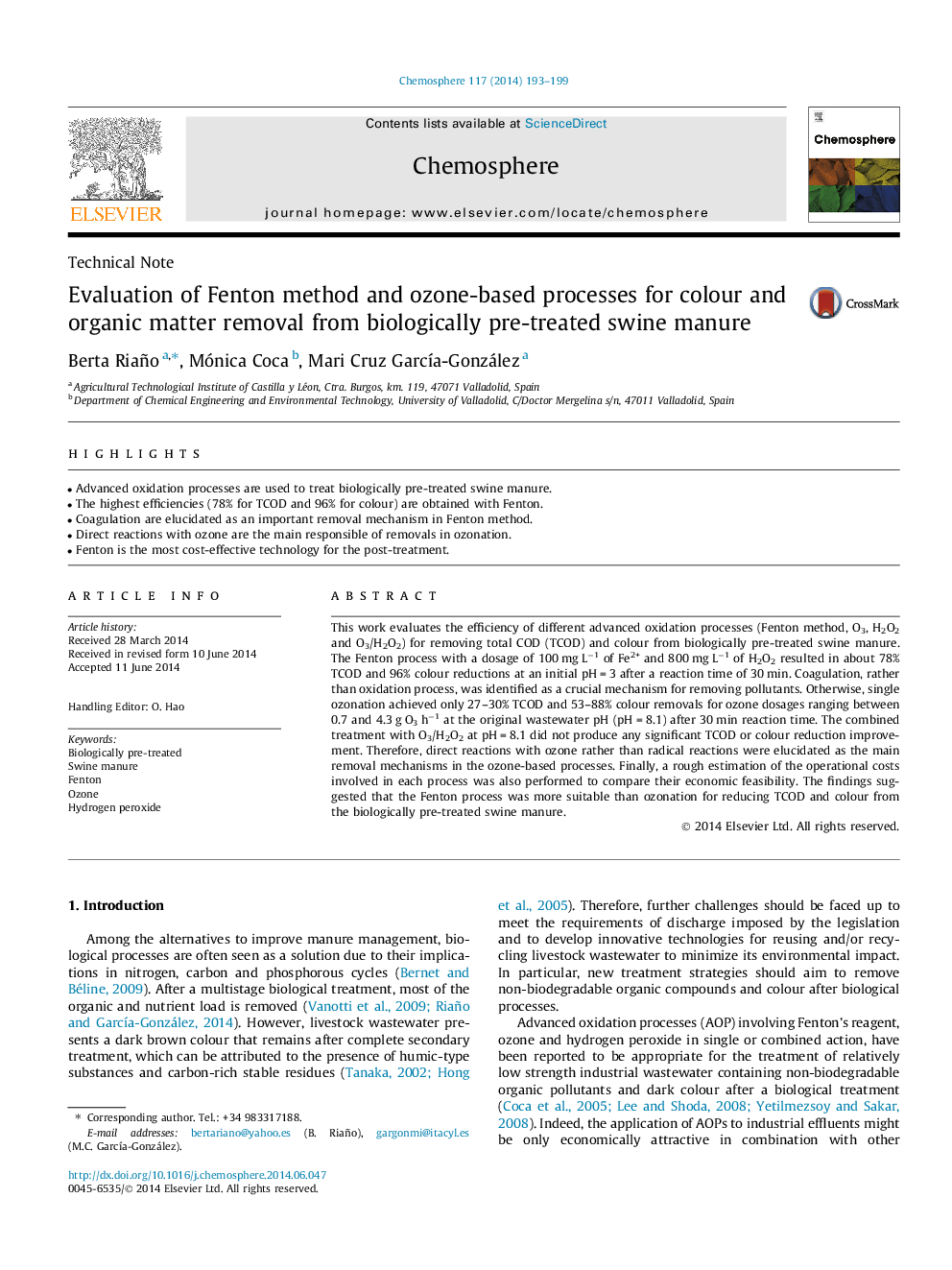| Article ID | Journal | Published Year | Pages | File Type |
|---|---|---|---|---|
| 6308617 | Chemosphere | 2014 | 7 Pages |
Abstract
This work evaluates the efficiency of different advanced oxidation processes (Fenton method, O3, H2O2 and O3/H2O2) for removing total COD (TCOD) and colour from biologically pre-treated swine manure. The Fenton process with a dosage of 100 mg Lâ1 of Fe2+ and 800 mg Lâ1 of H2O2 resulted in about 78% TCOD and 96% colour reductions at an initial pH = 3 after a reaction time of 30 min. Coagulation, rather than oxidation process, was identified as a crucial mechanism for removing pollutants. Otherwise, single ozonation achieved only 27-30% TCOD and 53-88% colour removals for ozone dosages ranging between 0.7 and 4.3 g O3 hâ1 at the original wastewater pH (pH = 8.1) after 30 min reaction time. The combined treatment with O3/H2O2 at pH = 8.1 did not produce any significant TCOD or colour reduction improvement. Therefore, direct reactions with ozone rather than radical reactions were elucidated as the main removal mechanisms in the ozone-based processes. Finally, a rough estimation of the operational costs involved in each process was also performed to compare their economic feasibility. The findings suggested that the Fenton process was more suitable than ozonation for reducing TCOD and colour from the biologically pre-treated swine manure.
Related Topics
Life Sciences
Environmental Science
Environmental Chemistry
Authors
Berta Riaño, Mónica Coca, Mari Cruz GarcÃa-González,
